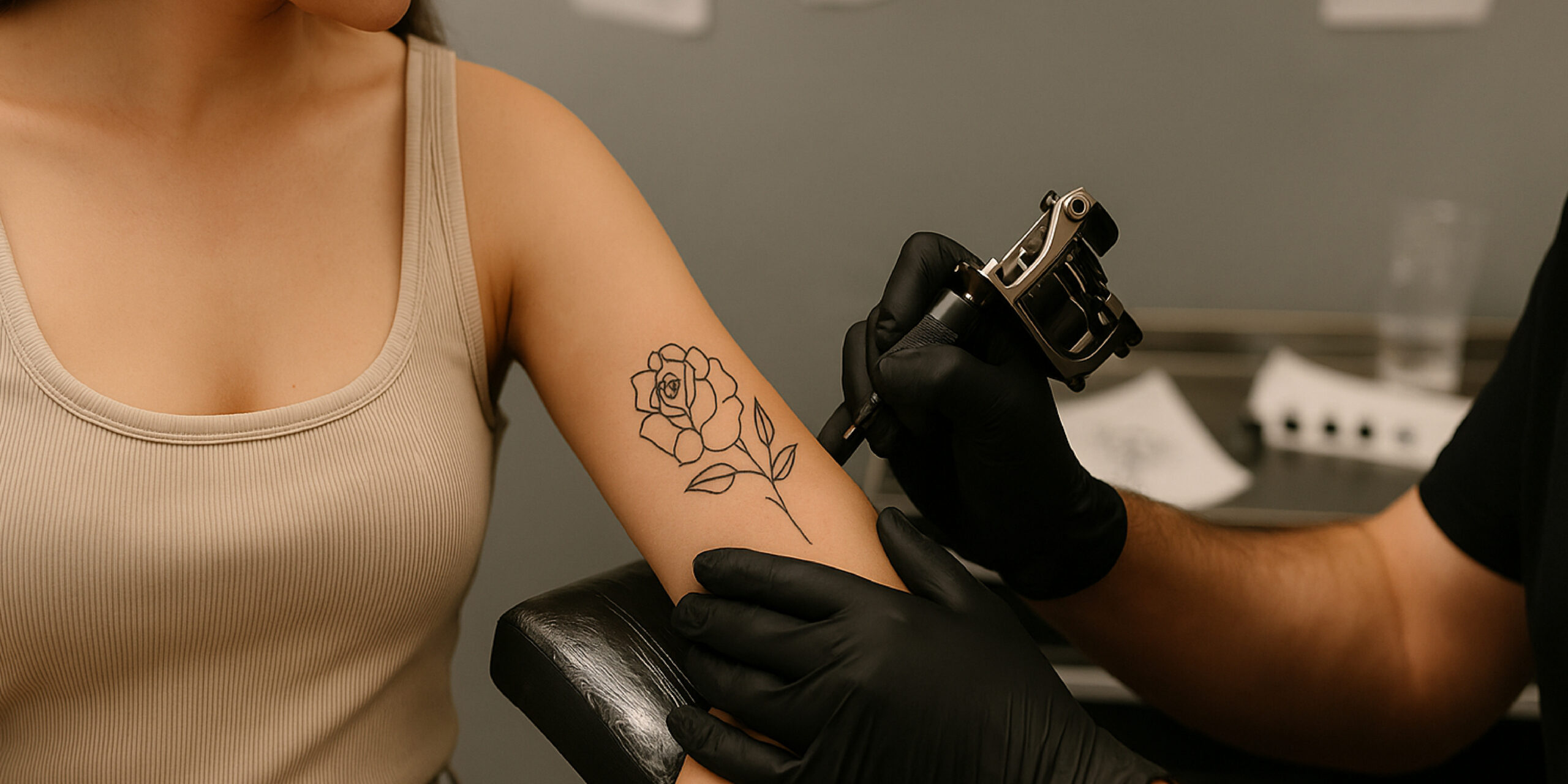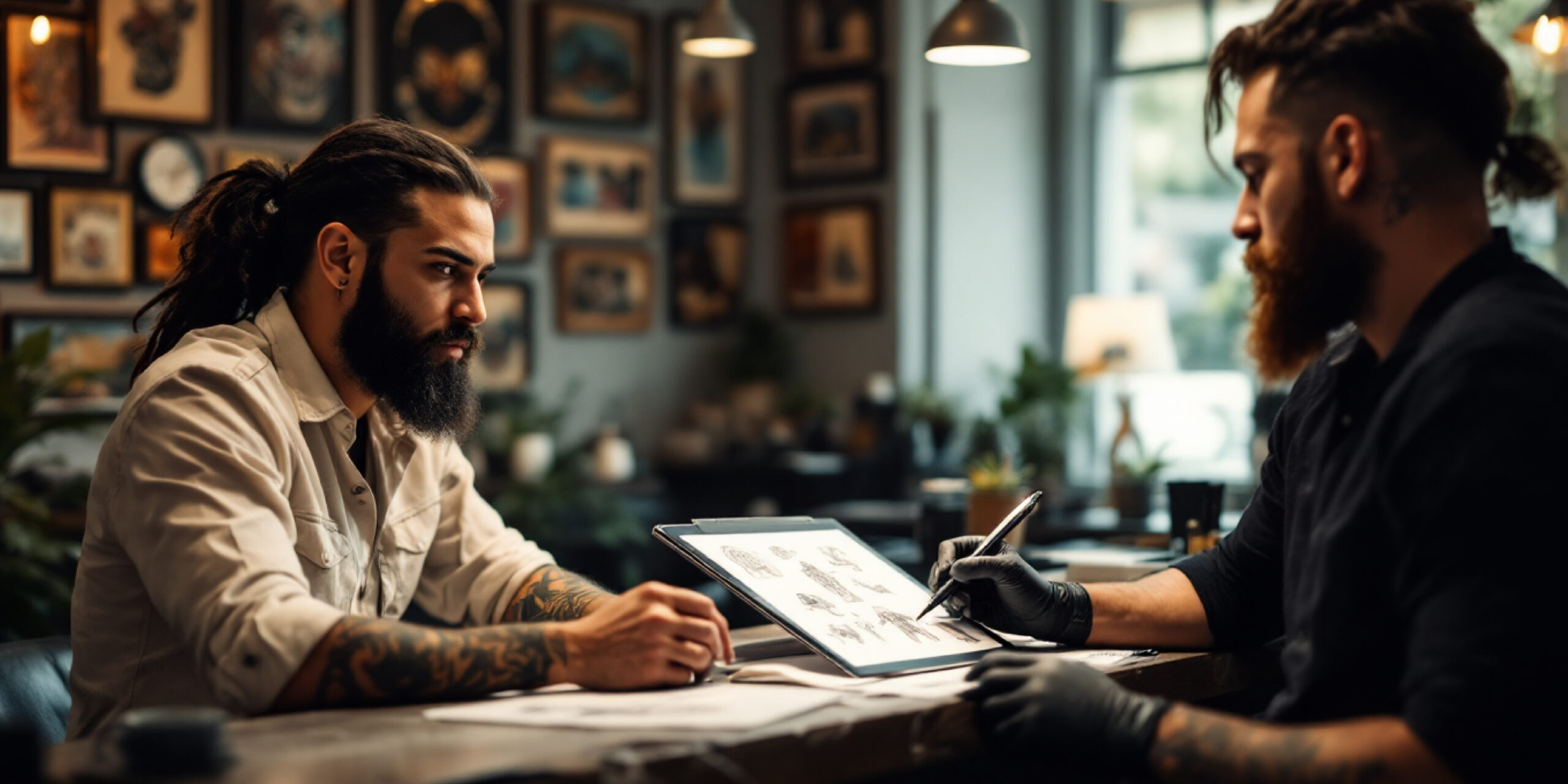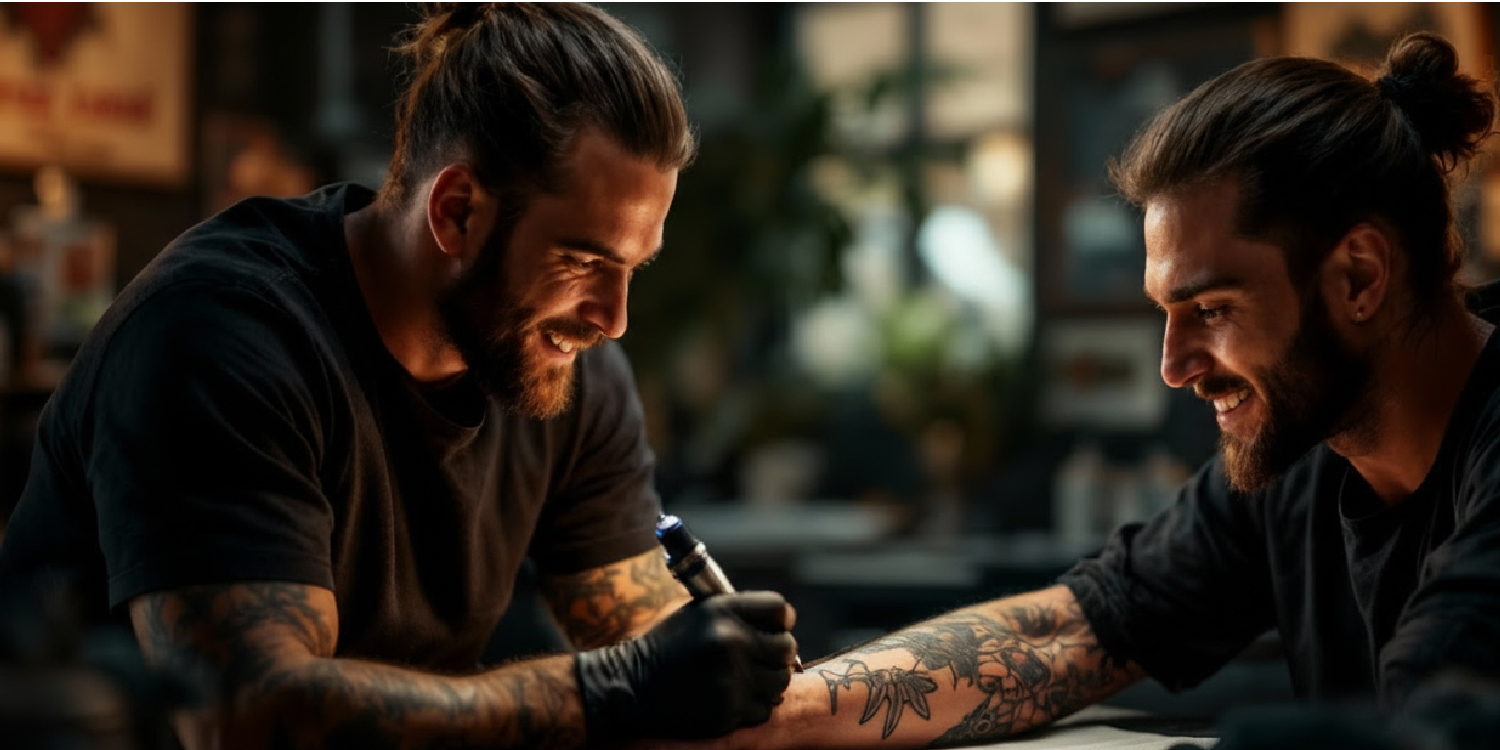Tattoo parlours were once seen as sketchy places. They were dark and mysterious. Entering one felt like stepping into another world. In the past, tattoos were associated with rebels, bikers, sailors, or rock stars. “Good” folks in offices, banks, or schools rarely had ink. Tattoo parlours mainly catered to the “outsiders”.
But today the world is different. Everyone has jumped onto the tattoo bandwagon. Tattoos speak of art and identity. They tell personal stories. Tattoo parlours are creative spaces. They are clean, friendly, and professional. They represent a shift. A shift in how we see ink. And that shift is reaching workplaces.
A Short History
Tattoos have roots all over the world. Tattoos have been used as symbols of status, healing, and group identity in many cultures in the past, like ancient Egypt, Polynesia, and Japan. Tattooing was a meaningful ritual in the past.
Tattoos in the 20th century were stigmatised. They were for outlaws or troublemakers. They were not referred to in polite society. If you had ink, you had to explain it or keep it hidden. You didn’t normally show your tattoos in public or at events. They were private.
The Turnaround
In time, things changed. How did tattoo parlours become mainstream?
Firstly, artists in tattoo parlours began to become professionals. Hygiene became the priority. Tattoo parlours became studios. They were clean, licensed, and safe. Now, they follow strict health codes. Clients are assured of good service at tattoo parlours.
Secondly, social media was a boon. Artists were able to show their art online. Tattoo parlours started gaining followers. Styles like watercolours, minimalism, realism, and fine line became popular. Tattoos were art. Clothing brands, fashion models, models, and celebrities flaunted tattoos. Gradually, the negative image changed.
Thirdly, Gen Z grew up seeing ink in everyday life. In music videos, sports, and movies. Gone are the days when tattoo parlours meant you could not get a respectable job. They were considered a form of storytelling. Commemorating lives. Expression of values.
The Workplace Stigma
Not all workplaces have embraced tattoos yet. Some remain old school. They have concerns that tattoos seem unprofessional. They fear that it would project a negative image. Rules at many workplaces said: “Cover arm tattoos”, or “Keep ink hidden”. Even visible feet or collarbone tattoos had to be concealed.
Today, that is changing too.
Industries Leading the Change
Many mainstream industries embrace tattoos now.
Tech: Startups and tech giants often have relaxed dress codes. Engineers, designers, and managers sport sleeve tattoos. Tattoos have become conversation starters. They are talked about at meetings. They reflect personality and creativity. Both are traits that are valued in tech.
Media and Creative: In film, design, advertising, and publishing, tattoos are the norm. They fit the culture and image. Customers expect innovation. Creative people frequently ink themselves, and this suits the image of the industry perfectly.
Hospitality and Retail: Bartenders, baristas, and shop staff interact with clients. They show off their tattoos. It speaks of creativity and tells a story, which usually sparks interest. Clients are curious about the meaning of the tattoo. It is an opening to start a conversation and connect. When clients feel a connection, they will often revisit, and that will automatically boost sales.
Freelance and Self-Employed: Freelancers, artists, and personal brands often wear tattoos openly. Tattoos are part of their branding. They communicate authenticity and tell a story. Content creators, photographers, or stylists are mostly tattooed. Tattoos show who they are and what they stand for, and they wear them proudly.
The Role of Tattoo Parlours
Let’s explore where tattoo parlours fit in workplace acceptance.
Professionalism by Design
Modern tattoo parlours are like design studios. They have digital portfolios and prior booking. A tattoo is the result of consultation, discussion about size, placement, style, and meaning. The tattoo artist sketches, gets approval, and plans a tattoo.
This organised approach appeals to professionals. It is much like business practices. They cater to all kinds of clients and creative minds.
Educating Clients
Tattoo parlours help with education nowadays. Education about aftercare, colours, fading, line works, and cover-ups. They build trust with the clientele. Educated clients feel smart and make better decisions. It builds confidence to show tattoos at work.
Supporting Individuality
Tattoo parlours help create personal narratives. Most workplaces encourage diversity. A visible tattoo shows heritage. Shows mental health journey. Shows identity. Parlours embrace that. They create meaningful ink. That supports authenticity.
Leading the Conversation
Tattoo parlours use social media to show real clients. Nurses with floral arm sleeves. Teachers with small wrist symbols. Lawyers with chest tattoos. These are all real, relatable people. They are not wild stereotypes.
People start seeing tattooed professionals in normal jobs. They begin to associate tattoos with art and self-expression, rather than rebellion. They feel proud to sport one. That helps build acceptance.
Changing Work Policies
Many businesses had tattoos banned. But companies are changing companies. The shift comes from inside. Employees are pushing for authenticity, and management is recognising that inclusion yields benefits. Allowed visible tattoos can:
- Boost employee satisfaction
- Attract younger workers
- Show brand modernity
- Reflect company values on diversity
The workplace culture is slowly evolving to include diverse elements, and tattoos are at the forefront of this change.
Employers are Changing Too
Companies used to believe that tattoos would chase away prospective customers. But the reality is quite different. Customers see people, not just ink. Modern tattoos are artistic and tasteful. They have nothing to do with rebellion anymore.
Some clients even appreciate it. They talk about shared values. They remember conversations sparked by a special tattoo. And they trust the staff more. Trust builds loyalty.
How to Position Ink at Work
If you have tattoos and want to show them at work, here are ways to be smart about it:
Know your environment: Observe what is common at your level and department.
Start small: Choose a less visible tattoo area at first.
Style matters: Let your tattoo parlour advise on a design that suits your field. Go for tasteful, neat lines or fine art.
Have a story: Get a meaningful tattoo and be ready to share your story.
Be smart about placement: Get the tattoo where it is possible to cover up if the need arises.
Check company policy: Some allow visible tattoos but ban gang-related or offensive content.
Lead with confidence: Your attitude sets the tone. Wear your tattoo proudly.
Role of the Tattoo parlours
When you do your research on tattoo parlours, choose one that suits your goals. The right one will give you a good aftercare plan. Cleanliness and professionalism should be the top priority. Tattoo parlours should accommodate discussion about the design and placement. They should build trust with you and get ink that fits your life for life.
Final Thoughts
Tattoos are stories written in ink. Tattoo parlours are places of creativity. Tattoos are being accepted in workplaces more and more today. Gen Z is redefining what workplaces should look like. Workplaces are embracing diversity and inclusivity.
Ink won’t hold you back anymore. It can be a part of your individuality in your professional life, too.
So, if you’ve been holding back about getting inked – step into a good tattoo parlour. Pick a placement and tattoo that means something to you. And wear it with pride!












